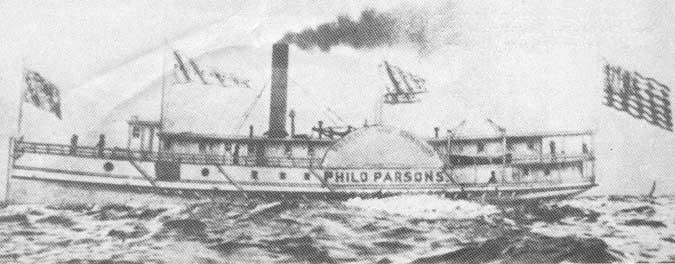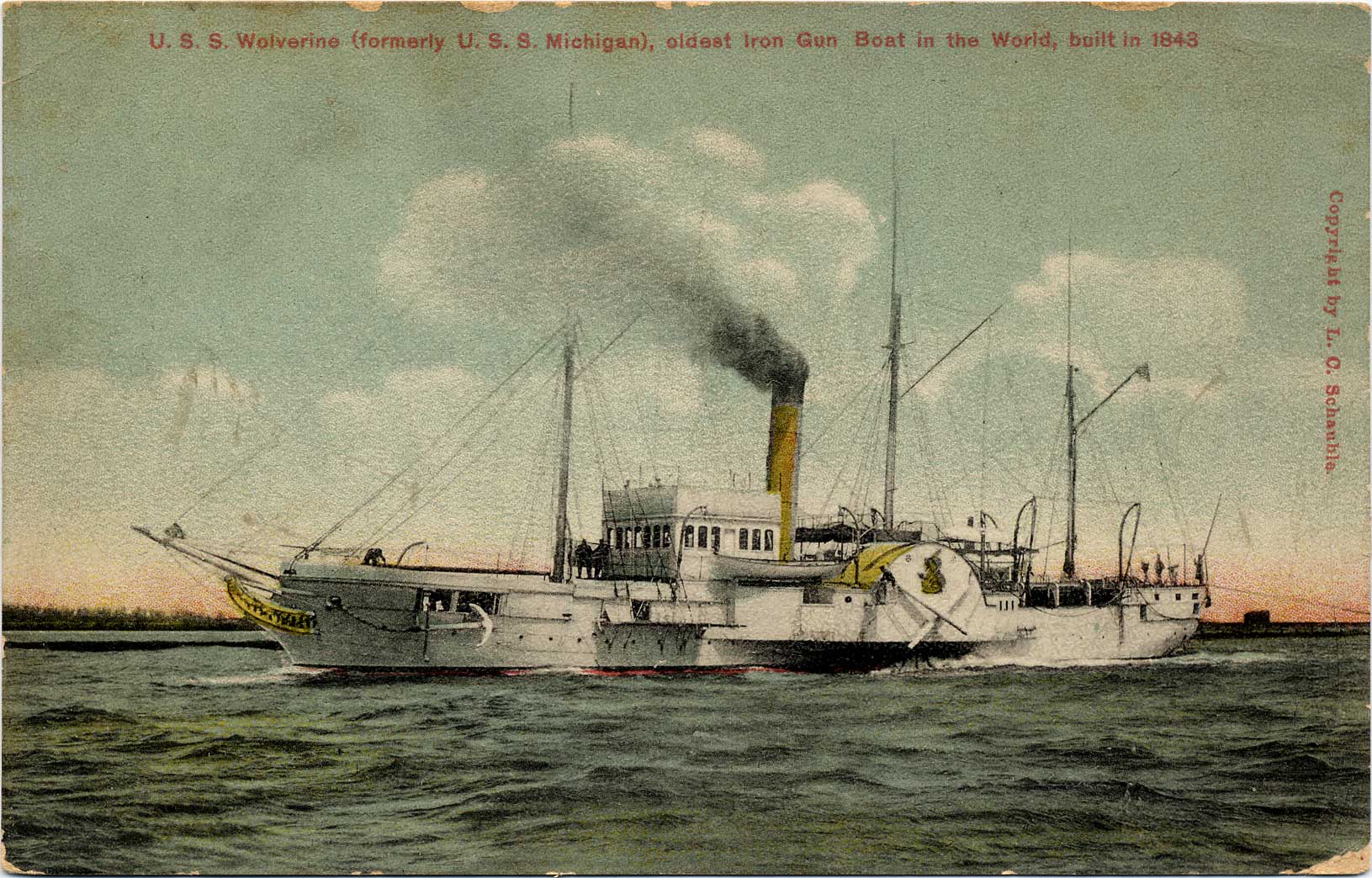Civil War On Lake Erie
When presented with a map of the United States, most people can identify
the general region in which the Civil War was fought. Few would point to Michigan,
Wisconsin, or New York – which might lead you to question the title of this piece.
While most of the war was fought south of the famous Mason-Dixon Line, the Union remained prepared to counter an attack from the North (Canada) if one were to come.
The relationship between the US and Canada was tense during the
1830s. The situation grew worse when those of the Great Lakes region learned that
Canada was building warships. The Minos was rumored to be an ironclad giant with
a two-foot-thick hull unsusceptible to small cannon fire. The US Navy had withdrawn
from the Great Lakes after the War of 1812, leaving the area with no protection against
Canada. Despite the fact that US-Canada relations had improved by the 1840s, the
Union launched the USS Michigan in Lake Erie on December 5, 1843.
Although both England and France had experimented with iron-hulled ships, the
USS Michigan was the first of her kind for the United States. Navy Secretary A. P. Upshur

decided to use iron because it was imperative “to use the immense resource of our country in that most valuable metal” and “to ascertain the practicability and utility of building vessels, at least for harbor defense, of so cheap and indestructible a material.” As it turns out, the USS Michigan would see little action during her time on Lake Erie.
The Confederacy considered launching an attack against the North from Canada several times throughout the Civil war. Lt. William Henry Murdaugh drew up the first of such schemes in the year 1863. A small group of naval officers would travel into Canada, purchase a Canadian-manned steamer, and set course to Lake Erie to attack the USS Michigan. After the assumed capture, the South would use the ship to control locks and shipping on the Great Lakes. The plan was trashed when President Jefferson Davis refused to give his approval. Meanwhile, the USS Michigan continued to cruise the Great Lakes without incident, providing a sense of security for all those in the area. Shortly following riots in New York City, the USS Michigan’s commander reported about Detroit: “I found the people suffering under serious apprehensions of a riot … The presence of the ship perhaps did something toward overawing the refractory, and certainly did much to allay the apprehensions of the excited, doubting people” (July, 1863). The USS Michigan was called upon for similar duty in Buffalo, New York when riots seemed to threaten in
August.
The following year, Navy Secretary Gideon Welles warned the USS Michigan to
be “prepared for active service as soon as ice will permit.” His fears were realized a few

months later on September 19, 1864 when 20 Confederates sympathizers disguised as passengers boarded the American steamer Philo Parsons, seizing the ship sometime later near Kelly’s Island. Acting Master John Yates Beall and his men were on a mission to liberate the Confederate prisoners at Johnson’s Island. The plan also included the capture of the USS Michigan, assigned to guard the Union Prisoner Camp in Sandusky Bay, Ohio. If the plan succeeded they would make use of the ship in commerce raiding and attacks on Great Lakes Ports.
Meanwhile, Confederate agent Charles H. Cole was busy building connections
amongst the officers aboard the USS Michigan. Commander Carter quickly discovered Cole’s
deception and had him arrested before the Rebel-laden Philo Parsons reached the
island. The arrested Confederate was not able to send the agreed-upon signals to Beall,
who reluctantly abandoned his mission and retreated to present-day Windsor, Canada.
His men helped him strip and burn the Philo Parsons. The USS Michigan continued to
patrol the Great Lakes unscathed.

Beall’s failed plan was the Confederate’s final attempt to reach the USS
Michigan. She remained on duty in the Great Lakes region for several years following
the conclusion of the Civil War and was renamed Wolverine. The name Michigan was transferred to a new, stronger battleship.